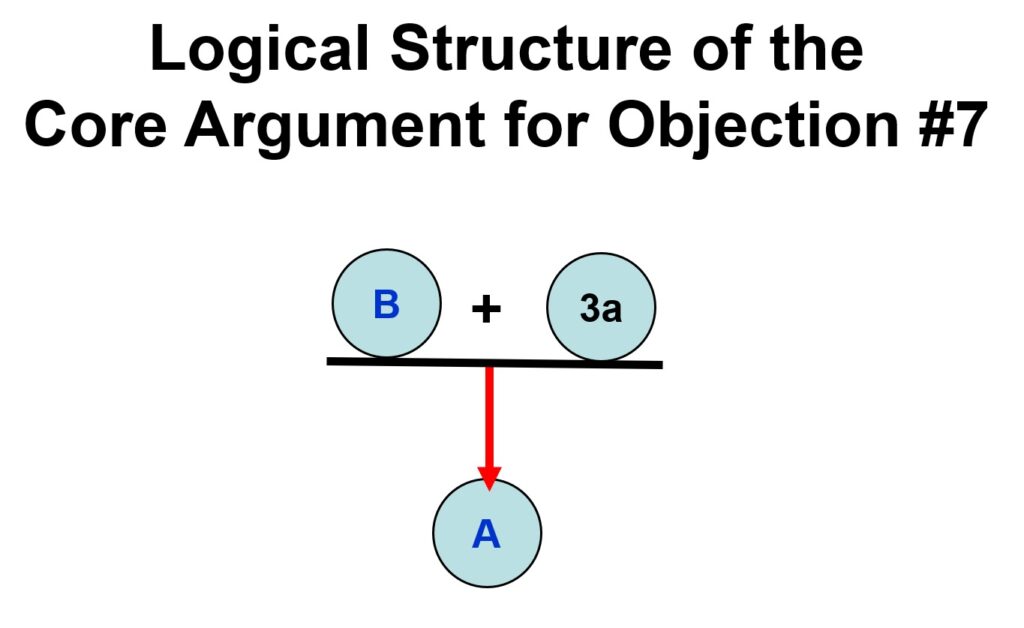Kreeft’s Case Against the Swoon Theory – Part 24: The Core Argument of Objection #7
WHERE WE ARE
In Part 23 of this series, I provided a careful analysis of the argument constituting Objection #7 (Who Moved the Stone?) by Peter Kreeft and Ronald Tacelli against the Swoon Theory in Chapter 8 of their Handbook of Christian Apologetics (hereafter: HCA).
In this current post, I will begin to carefully evaluate this argument.
THE CORE ARGUMENT OF OBJECTION #7 (WHO MOVED THE STONE?)

Here is the core argument of Objection #7:
B. IF the Swoon Theory is true, THEN there is a plausible natural explanation for how the stone was moved from the door of Jesus’ tomb on the weekend after Jesus was crucified.
3a. There is no plausible natural explanation for how the stone was moved from the door of Jesus’ tomb on the weekend after Jesus was crucified.
THEREFORE:
A. The Swoon Theory is FALSE.
EVALUATION OF THE KEY PREMISE (B)
All of the other premises and inferences in the overall argument are focused on supporting the key premise (3a). But the key premise (B) must also be true in order for this argument to be SOUND, and Kreeft and Tacelli have provided no reason for us to believe that (B) is true.
Furthermore, premise (B) is in fact FALSE, so the core argument of Objection #7 is UNSOUND and should be rejected. Therefore, Objection #7 against the Swoon Theory FAILS, just like all of the previously examined objections have FAILED.
While it is true that most atheists and skeptics are also NATURALISTS who deny the existence of any supernatural beings, forces, powers, and creatures, some atheists and some skeptics believe in some supernatural being, force, power, or creature. Furthermore, although most proponents of the Swoon Theory are NATURALISTS who deny the existence of anything supernatural, some people who accept the Swoon Theory believe in some supernatural being, force, power, or creature.
The Swoon Theory only requires the belief that one particular event (or a few particular events) have a natural explanation rather than a supernatural explanation. The Swoon Theory only requires the belief that Jesus survived his crucifixion without any supernatural or divine interference and that Jesus later appeared to some of his disciples in an ordinary physical body, not in an immortal supernatural body. But accepting this natural explanation for these particular events does NOT mean that one rejects every supernatural explanation for other events. Thus, someone could believe in the Swoon Theory and ALSO believe that an angel moved the stone at the entrance of Jesus’ tomb (or a witch or wizard moved the stone with a magic spell, or a demon moved the stone, or Mars the god of war moved the stone, or a ghost moved the stone, or…).
Kreeft and Tacelli confuse the sociological point that most proponents of the Swoon Theory are NATURALISTS with the logical point that the Swoon Theory IMPLIES naturalism. The sociological point is probably correct, but the logical point is clearly FALSE. The Swoon Theory does NOT imply that NATURALISM is true. The Swoon Theory is fully compatible with supernatural explanations of other events (such as the movement of the stone from the entrance to Jesus’ tomb). Thus, premise (B) is FALSE. Therefore, the core argument of Objection #7 (Who Moved the Stone?) is UNSOUND and should be rejected. So, Objection #7 against the Swoon Theory FAILS.
The fact that the key premise (B) is FALSE is sufficient to show that Objection #7 FAILS; however, in the next post of this series, I will continue to evaluate other parts of the argument constituting this objection. I will show that the argument supporting the key premise (3a) is also UNSOUND, and thus that Kreeft and Tacelli have FAILED to provide us with a good reason to believe that premise (3a) is true, and that premise (3a) is DUBIOUS.
